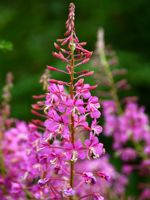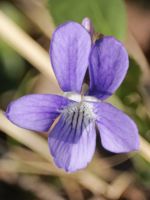Mon-Fri 9am - 5pm Mountain time
Fireweed vs Early Blue Violet
Chamaenerion angustifolium (Epilobium angustifolium)
Viola adunca
CUSTOM GROW
NOT AVAILABLE THIS SEASON - MIGHT RETURN
Fireweed is a native perennial wildflower known for its tall spikes of bright pink to purple blooms. Its long-lasting summer flowers are an important nectar source for pollinators such as bees, butterflies, and hummingbirds, while its seeds provide food for birds. Its showy, long-lasting display makes it visually striking in naturalized plantings.
Fireweed gets its namesake because it is often one of the first species to return after wildfires, supporting ecosystem recovery. Its wind-dispersed seeds allow it to spread readily, making it highly effective in large-scale restoration, revegetation, and naturalization projects.
Fireweed is the Provincial Flower of the Yukon.
Early Blue Violet is a low-growing native perennial wildflower valued for its striking early-spring blooms. The flowers range in color from vibrant blue to deep violet, often marked with pale highlights and fine white hairs. They provide an important early nectar source for pollinators and serve as a host plant for several fritillary butterfly species.
It spreads by both seed and rhizomes, gradually forming small colonies. Its dark green, heart-shaped leaves add ornamental appeal, and the plant shows some resistance to deer browsing. Early Blue Violet is well-suited to naturalization projects and pollinator-friendly gardens, and has also been used in coastal butterfly habitat restoration in the Pacific Northwest.
Fireweed Quick Facts
Early Blue Violet Quick Facts
Toxicity: rhizomes, fruit, seed poisonous to humans

